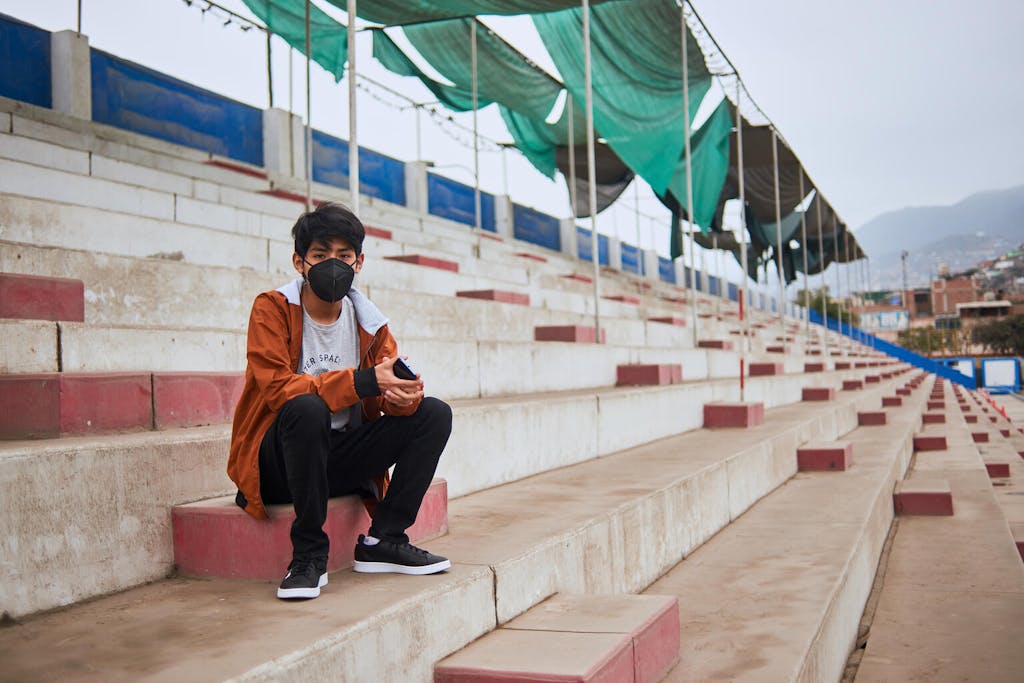The COVID-19 pandemic has caused unimaginable loss, grief, trauma, and isolation at a global scale — challenging our collective mental health and well-being. Schools across the globe were shuttered for months at a time as the virus spread, keeping children from learning, playing with friends, and accessing an essential social safety net. Many families were pushed into poverty, and children in lockdown were especially vulnerable to violence at home. Children and adolescents have been deeply affected by the mental health impacts of the pandemic and could feel them long after it ends.
According to a new report by the United Nations Children’s Fund (UNICEF) on child, adolescent, and caregiver mental health, the pandemic may represent the tip of a mental health iceberg.

Released ahead of World Mental Health Day this year, The State of the World’s Children 2021 report offers a sobering examination of children’s mental health today, underscoring the severity of the mental health challenges children and adolescents face that can lead to disability, disease, and death.
While there have been remarkable shifts in public perceptions of mental health disorders since the first World Mental Health Day in 1992, this increased awareness and growing acceptance are yet to be translated into urgent action and investment.
“When it comes to mental health, every country is developing,” said UNICEF Executive Director Henrietta H. Fore. “We can wait no longer. We cannot fail another generation. The time to act is now.”
So, exactly how much is the pandemic affecting the mental health of children and adolescents? And what can we do to take action? Here are five takeaways from the report.
1. The problem is of epidemic proportions.
More than 13% of adolescents aged 10-19 live with a diagnosed mental disorder as defined by the World Health Organization (WHO). But nowhere are the often-hidden mental health needs of children and adolescents being fully met.
2. Children everywhere are suffering.
Children‘s mental health is a borderless issue, with the prevalence of diagnosed disorders peaking in the Middle East and North Africa, North America, and Western Europe. Globally, 89 million adolescent boys aged 10-19 and 77 million adolescent girls aged 10-19 live with a mental disorder — 40% of them anxiety and/or depression.
3. Numbers don’t tell the whole picture.
The data fails to capture the true extent of all undiagnosed mental disorders and psychosocial distress felt by the world’s children. Child labor, abuse, and gender-based violence are increasing, as millions more families are experiencing poverty due to pandemic shutdowns. All of this harms children. And persistent stigma surrounding mental health care, compounded by lack of access to mental health services, leaves many children in limbo. Tragically, nearly 46,000 adolescents die from suicide each year, or more than one person every 11 minutes. Suicide is the fifth most prevalent cause of death for adolescents aged 10-19.

More robust collecting and sharing of mental health data through efforts like Countdown Global Mental Health 2030 are key to understanding progress and challenges surrounding mental health and crafting relevant policy.
4. It’s well past time to prioritize mental health.
Mental health disorders cannot be ignored, nor can their devastating impact on families, communities, and lives. It is time for governments to act. Children’s mental health has remained underfunded, untreated, and often ignored for too long. In 2021, the median government expenditure on mental health globally is a miniscule 2.1% of the median government expenditure on health in general. And that funding is for all mental health—the share dedicated to children and adolescents is just part of it.
5. Mental health is health.
The real, lived experiences of children and teenagers must be acknowledged, listened to, and taken seriously by the adults in their lives. The mental health of young people has to be protected both at home and in school. That begins with open, honest conversations with parents and teachers about issues that have been avoided for far too long. It means providing parents and caregivers support and equipping schools with resources to identify and help young people in need. It also relies on gathering solid data to understand the extent of the problem.
UNICEF reached more than 47 million children, adolescents, and caregivers last year to provide community-based mental health and psychosocial support. This work must continue to grow. It demands the partnership and commitment of governments everywhere to protect every child so they might live, grow, and learn safely and happily.
Check out these Resources from UNICEF
Explore “What’s on your mind?”, a new campaign to help parents and caregivers start mental health conversations with children and teens. Also, head to Voices of Youth, which aims to helps young people break the stigma around mental health. For resources and knowledge related to mental health and support in both emergency and chronic hardship settings, visit the Mental Health and Psychosocial Support Network, a growing global platform supported by UNICEF. You can also review the WHO’s World Mental Health Atlas, which can connect people to resources and identifies current gaps in care using data from 171 countries.
Featured Photo: UNICEF Ireland








